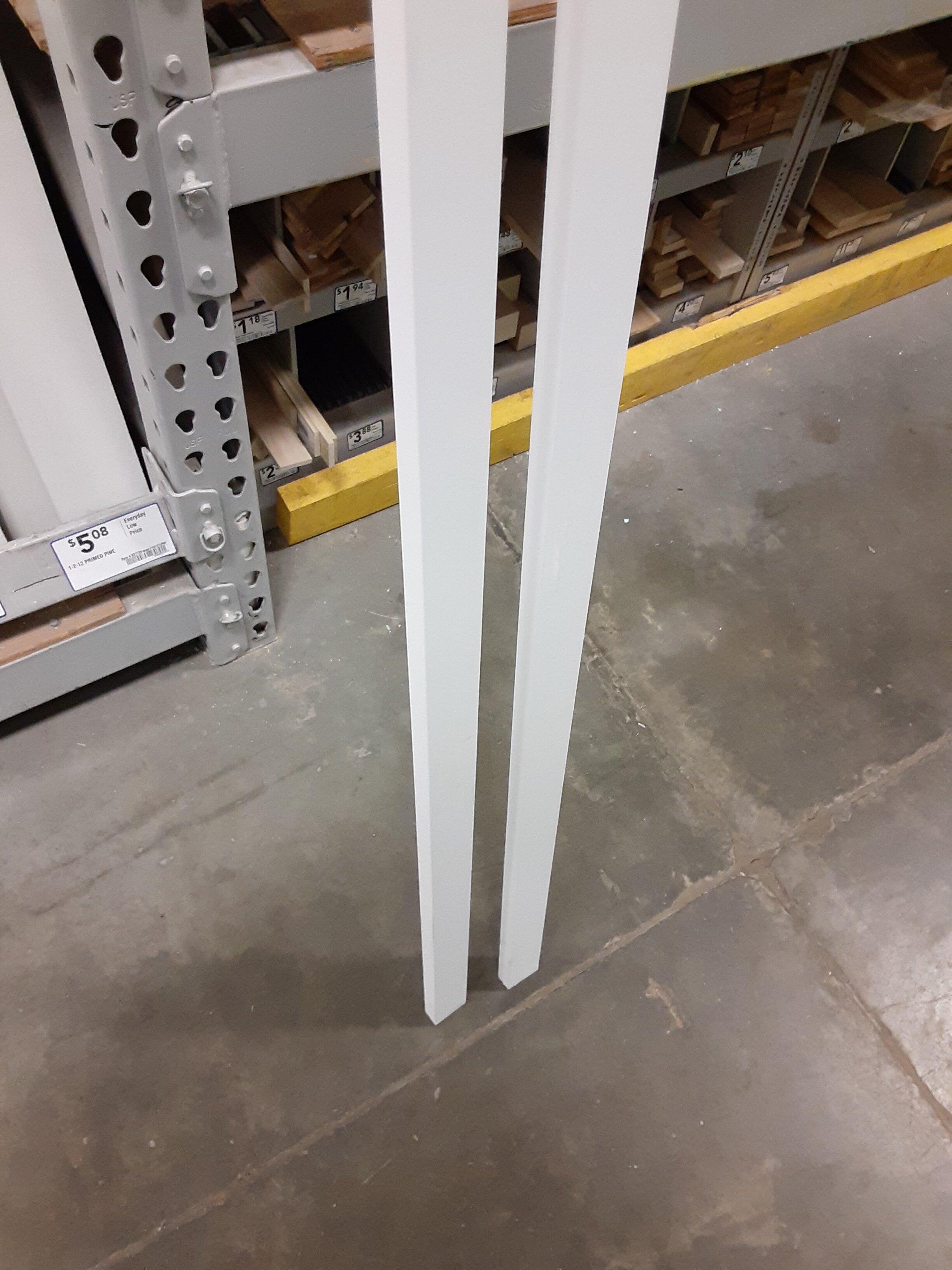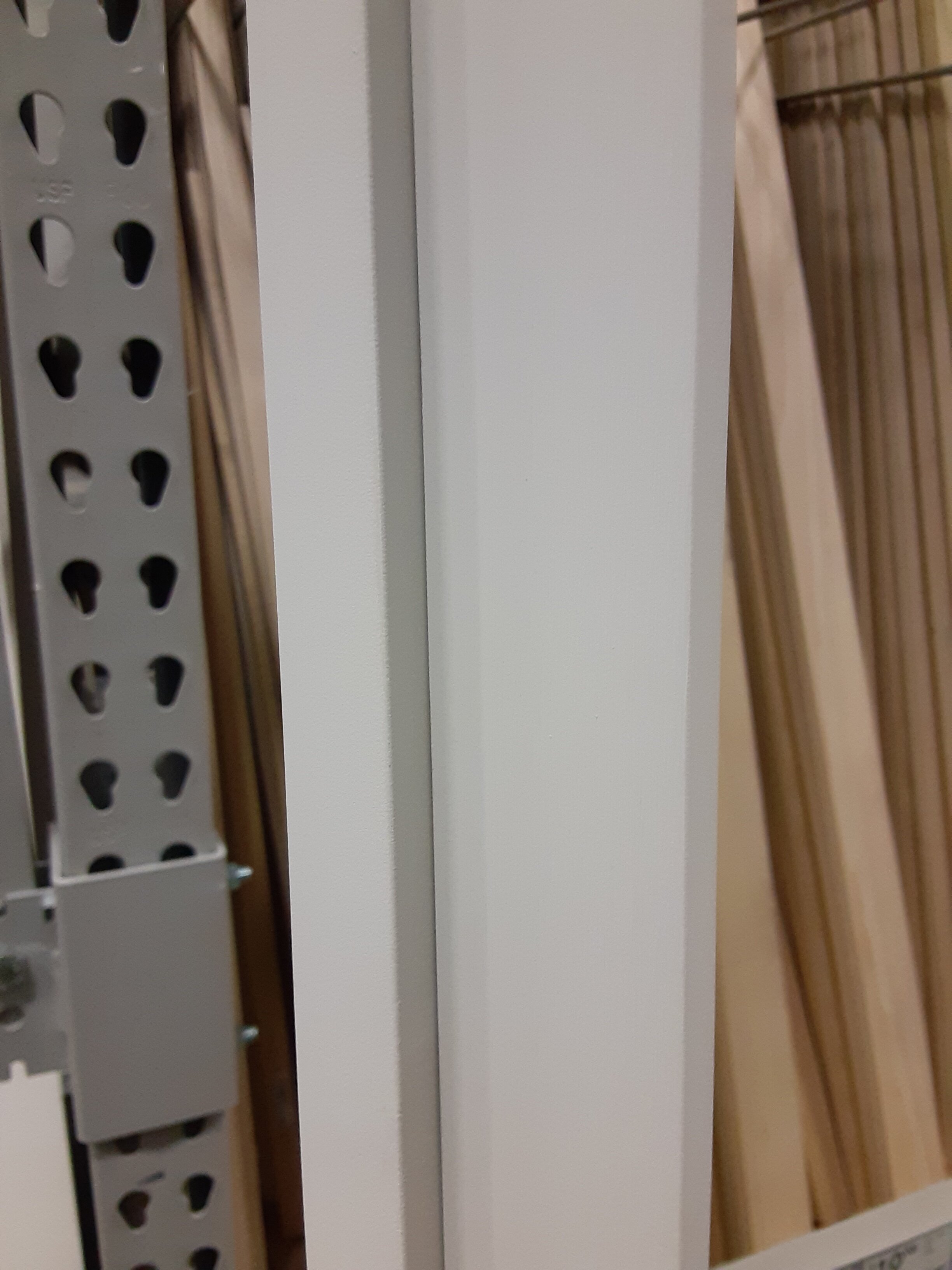Hot-Tube FAQ
HOW CAN I HANG A HOT TUBE FROM A HIGH CEILING WITHOUT A LADDER?
There’s a neat trick to do this as long as a wall placement works, and you can attach a couple of screws to the wall. All you need are two inexpensive 1” x 2” x whatever length you need trim boards (wood, not pvc) from a hardware store, suitable wood screws, and a 5” or 6” long hook or screw to hang the tube. A helper is a good idea. Pictures follow….here are the basic steps;
1) Place the hook an inch or so from the top of one of the trim boards, drilling it into the narrow dimension of the board. The middle of the tube will need to be at least 3.75” from the trim board which is why the hook needs to be at least 5” long. This first board supports the tube, so to prevent flex you want to orient the narrow part of the board towards the tube and the wall.
2) The second board is screwed to the wall at the top and bottom, and only needs to be a few feet long, just enough to support the first, longer board. Scew the wide side against the wall and make sure it’s straight up and down. Use a level if you can.
3) Pre-drill and set screws towards the bottom of first longer board, hook up the tube, and raise it up using the bottom end of the board, and hold it against the wall board where you want it. It’s pretty light so it shouldn’t be too much of a problem. Making sure it’s straight up and down, secure the top screw. Make a final adjustment and then secure the bottom screw. That’s it!
You can get creative here depending on your needs, but this is the basic technique we use when a wall or beam is available and is the best location. The final pictures shows a challenging install we did using this approach in a very large open design studio, with very high ceilings in an old warehouse. They needed six 15’ LED tubes in different locations in the large open space, with several large beams spanning the walls. We used two wall boards to get an extra inch we needed to get the tube into the best position.
Hot-TUbe Fans / Winter heating
How big a room can a Hot-Tube help?
The published data on destratification in a commercial setting suggests circulating roughly 1/2 the room volume each hour is needed to distribute heated air. Standard Hot-Tubes move approximately 90 CFM (cubic feet per minute). That's 5400 cubic feet an hour, more than enough to handle a 30' x 30' room with a 10 foot ceiling (9,000 cubic feet). However in a given room you may prefer 2 tubes depending on seating and other factors. Please keep in mind there are many significant and not easily measured variables such as air movements between rooms, drafts, and the quality (or lack) of insulation. Of course if there's not much difference in the air temperature at the ceiling compared to the floor, a tube won't be help. In the case of gas or wood heating stoves, forced hot air (with registers up high), and commonly with heat pumps, there's plenty of ceiling heat. On the other hand radiant floors, forced hot water, or electric baseboards may not generate enough hot ceiling air to make a difference.
When I put my hand down and feel the air blowing out the bottom of the tube, why doesn't it feel warm?
The same reason you feel cool under a ceiling fan or when enjoying a summer breeze - evaporation of moisture from your skin. So in winter, even though the fan might be blowing 70 degree air, it will still feel cool on your hand. That's one of the biggest drawbacks of a winter ceiling fan, not to mention the expense and hassle of installing one. With that in mind, it's best to have the deflector at the bottom of the Hot-Tube at least 2 or three feet away from where people will be sitting, unless the air temp coming from the tube is somewhat higher than 70 degrees or the airflow isn't pointed directly at someone.
Where should I place the Hot-Tube, and where do I aim the deflector at the bottom of the Hot-Tube?
Typically a tube can draw from a layer of hot air at the ceiling as much as 30 feet away from a heat source such as a wood or gas stove. Often just putting your hand or head near the ceiling will tell you all you need to know. If you're in doubt, an inexpensive digital thermometer such as used for an aquarium is a pretty good way to determine the air temperature near the ceiling. Likely spots include the upper corners of a room and by doors and stairs.
Here are a few scenarios that may help you visualize solutions to common situations;
1. Let's say you want to heat the room adjacent to your warm living room, where you have a nice toasty heat pump, wood, or gas stove. You want to hang a Hot-Tube just inside the heated living room, next to the doorway, and aim the deflector through so it directs hot ceiling air from the heated living room directly into the room you want to warm up.
Depending on factors such as the temperature of the ceiling air and size and starting temperature of the room your trying to warm, it may take an hour or more to notice the effect. Sometimes it's best to "pre-heat" a room with baseboard or central, then rely on the Hot-Tube to maintain that heat level for the rest of the day. However if the room is drafty from leaky windows, grab some removable Mortite window caulk and take care of that performance killing problem first.
2. If you're only trying to improve the heat distribution in a room where the stove or heat source is located, try placing the Hot-Tube near the far wall away from the heat source, and direct the air back towards the middle of the room. This will set up a circulation pattern and help distribute warm air throughout the room.
3. Hot air really streams up a staircase, so near one is almost always a good spot for a Hot-Tube. It's even better if you can curtain off the stairway and block the heat from going upstairs.
I have a Hot-Tube, but I haven't noticed any change at all. Why is that?
Hot-Tubes will not make much of a dent in a seriously drafty and poorly insulated room. Chances are you need to use caulking strip on your windows and perhaps your doors. The great news is it can be done from the inside, in the middle of winter, and for only a few dollars. Buy a roll of Mortite caulking strip! Less than $10 will likely take care of all your needs for many years. You can even reuse the caulk if you're so inclined (we like that attitude around here). Window caulk is much cheaper than sheets of window film, and only takes a few moments to press in and take out. Go down to the hardware store and get some now - it will shock you what a few dollars of window caulk and a few minutes of your time can accomplish. Don't forget to check for cold air leaking beneath and around the door frame.
Will I be able to stop using central heat, and rely only on my heating stove and Hot-Tubes?
That really depends on how cold it is, the layout of your space, and quality of your home's insulation. Sometimes it's best to use the central system to get the house temp up in the morning and shift to a heating stove the rest of the day. That's our strategy...
We have a good sized old home, probably 3800+ sf when it's all tallied up. In winter we effectively make it two smaller homes, our "day" home downstairs of around 1500 sf, and our "night" home upstairs of about 500 sf. The first floor back rumpus room is curtained off unless we're using it, the stairway has a heavy drape separating the downstairs from the upstairs and the studio on the 3rd floor is heated only when in use. For us the stairway is not really in view so it was pretty easy to setup a curtain.
For our several zone house, we purchased a number of inexpensive digital thermostats with timers, turning central heat and the gas stove on about 6 am to heat the downstairs, while the electric heat in the bedroom is turned off all day and most of the night. By about 7 am the downstairs has warmed up, central shuts off (central is set to only kick in if temps really drop) and the gas stove takes over for the day. Around 10pm the thermostat on the gas stove and the central heat turn way down until morning.
Using this approach with several strategically placed Hot-Tubes, our home has become much more comfortable - despite starting out during the incredibly cold winters of 2014 and 2015. These winters were much colder than 2013, yet the home was much more comfortable, and electric and gas use dropped 25% and 10% respectively. In a big first the downstairs office electric baseboard system was never used. We'll never need the electric baseboard in there again.
Clemons Pond, Hiram Maine by Bill Zelman




